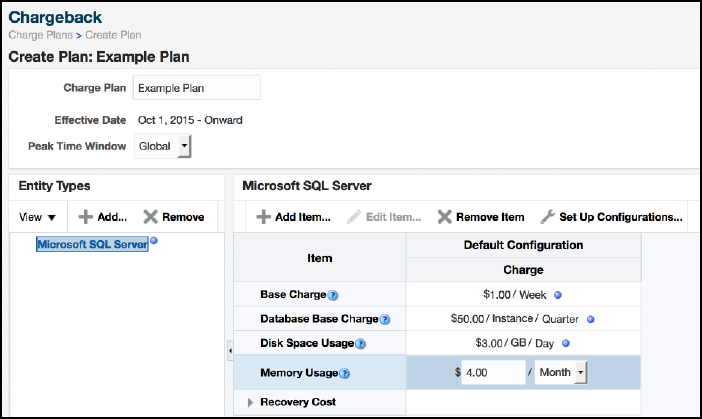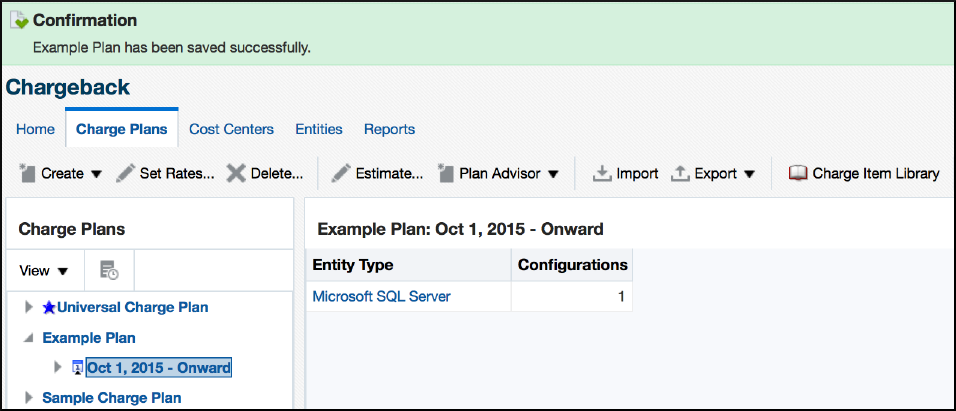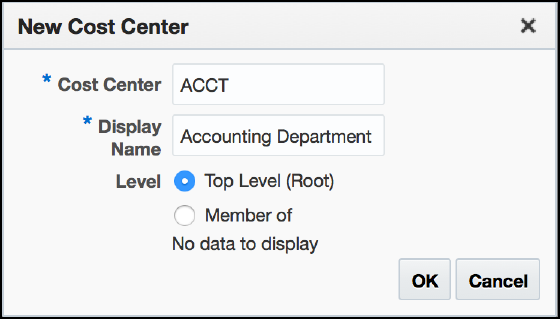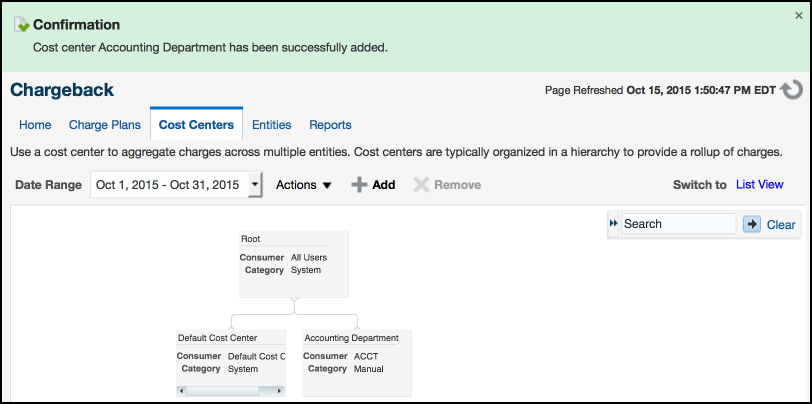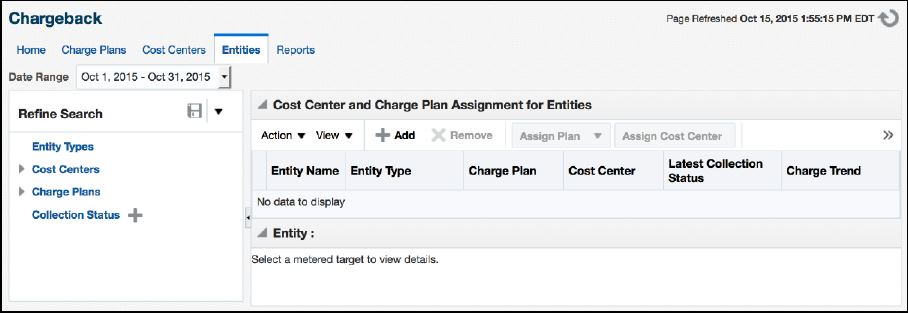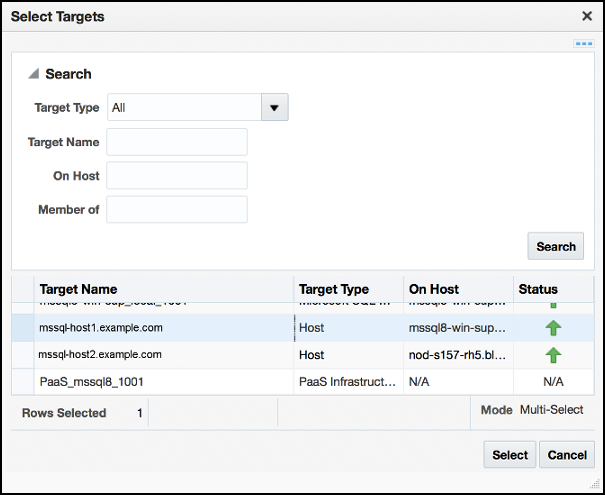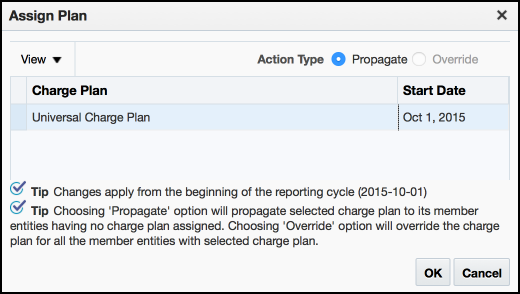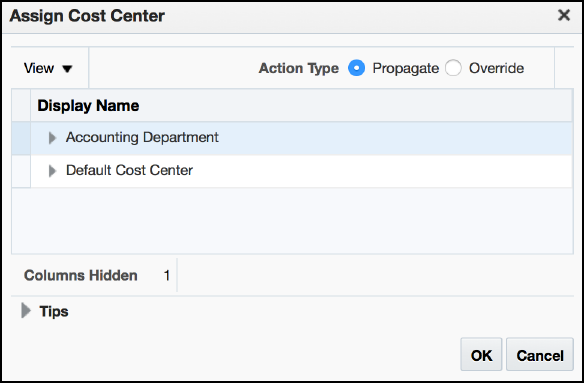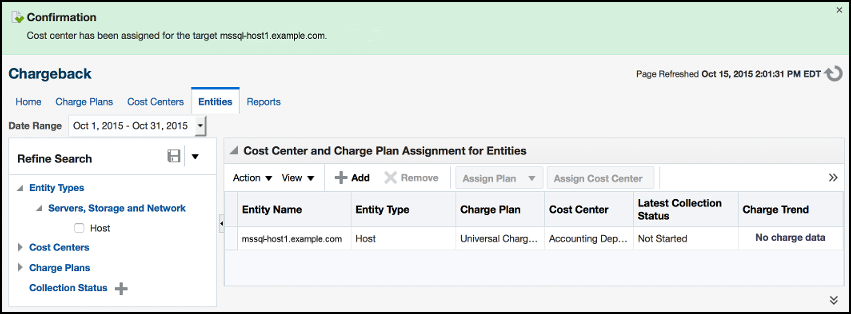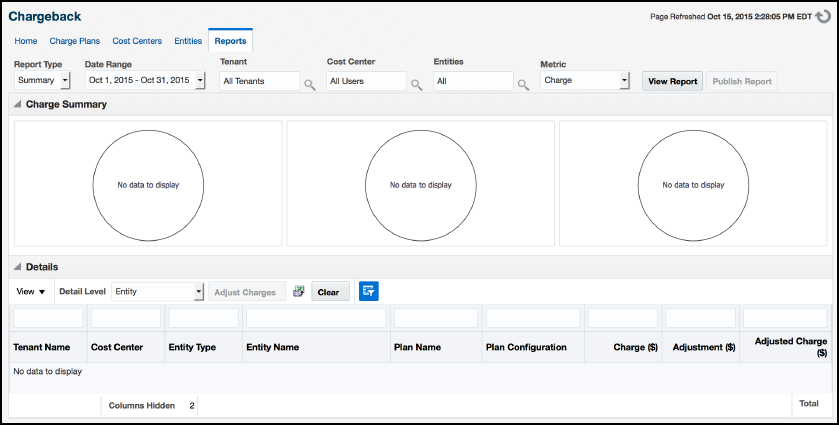8 Chargeback Functionality
This chapter contains the following sections:
About Chargeback
Chargeback, as the name implies, is a tool of accountability. The application's primary uses can generally be described as follows:
-
Provide resource usage metering by aggregating and normalizing the enormous amount of metric data Enterprise Manager collects.
-
Provide IT with a means to "charge" a currency amount to the consumers of resources.
-
Provide consumers with reports detailing their consumption and associated charges.
Chargeback Plug-in Deployment
In order to use the Chargeback functionality, it is necessary to deploy the Chargeback plug-in (from the Setup menu, select Extensibility, and then select Plug-ins).
Configuring a Charge Plan
A charge plan defines the resources to charge for and their associated rates. There are two types of charge plan: the universal charge plan and the extended charge plan.
The universal plan establishes rates for three basic metrics (CPU, memory, and storage). If you have not configured the universal charge plan, refer to the Chargeback Administration section of the Oracle Enterprise Manager Cloud Administration Guide.
An extended charge plan enhances the universal plan to include entity-specific metrics. It allows you to implement charges that relate to specific characteristics of an entity. The entity type determines the items for which rates can be charged.
Following the steps below to create an extended charge plan for Microsoft SQL Server:
Revising Extended Charge Plans
You can update an extended charge plan in the following ways:
-
Make changes to the charge rates in effect for the current or a future cycle.
-
Create a plan revision for the next or a later report cycle, based on an existing plan.
To make changes to the charge rates in effect for the current or a future cycle:
-
Select the plan revision in the navigation pane and click Set Rates.
-
Make adjustments to the charge items and rates in effect.
-
Click Save to update the plan revision.
Note:
When changing charge rates for the current cycle, the changes are retroactive to the beginning of the cycle.
To create a plan revision for the next or a later report cycle, based on an existing plan revision:
Configuring a Cost Center
Cost centers can be an individual or department within an organization that spreads charges across an enterprise.
The next step to setting up chargeback functionality is to configure a cost center.
Follow the steps below to create a cost center:
Configuring an Entity
For each chargeback entity (target), the administrator is able to assign a charge plan to a target and a target to a cost center.
The following steps are used to setup your entities:
From the Entities tab, you can change the cost center or charge plan associated with a specific entity by selecting the entity and clicking either Assign Plan or Assign Cost Center, depending on which one you want to change. To delete the entity, click Remove Entities.
Generating and Distributing Chargeback Reports
Chargeback summary reports are a powerful analytical tool for tracking resource usage and charge distributions. These summary reports show information related to charge or resource utilization broken down by cost center, entity type, and resource. They enable you to quickly assess the entities or cost centers with the greatest charges or resource utilization. Summary reports are primarily useful for drill-down purposes.
Data collection occurs once a day. The daily data collection job for the current cycle is based on charge plan and cost center assignments. The reporting cycle defines the time period for which to calculate charges. The cycle is for the current month starting on the first day of the month.
To generate ad hoc reports:
Additional Information for Chargeback
For further information regarding Chargeback, see the Chargeback Administration section of the Oracle Enterprise Manager Cloud Administration Guide.

